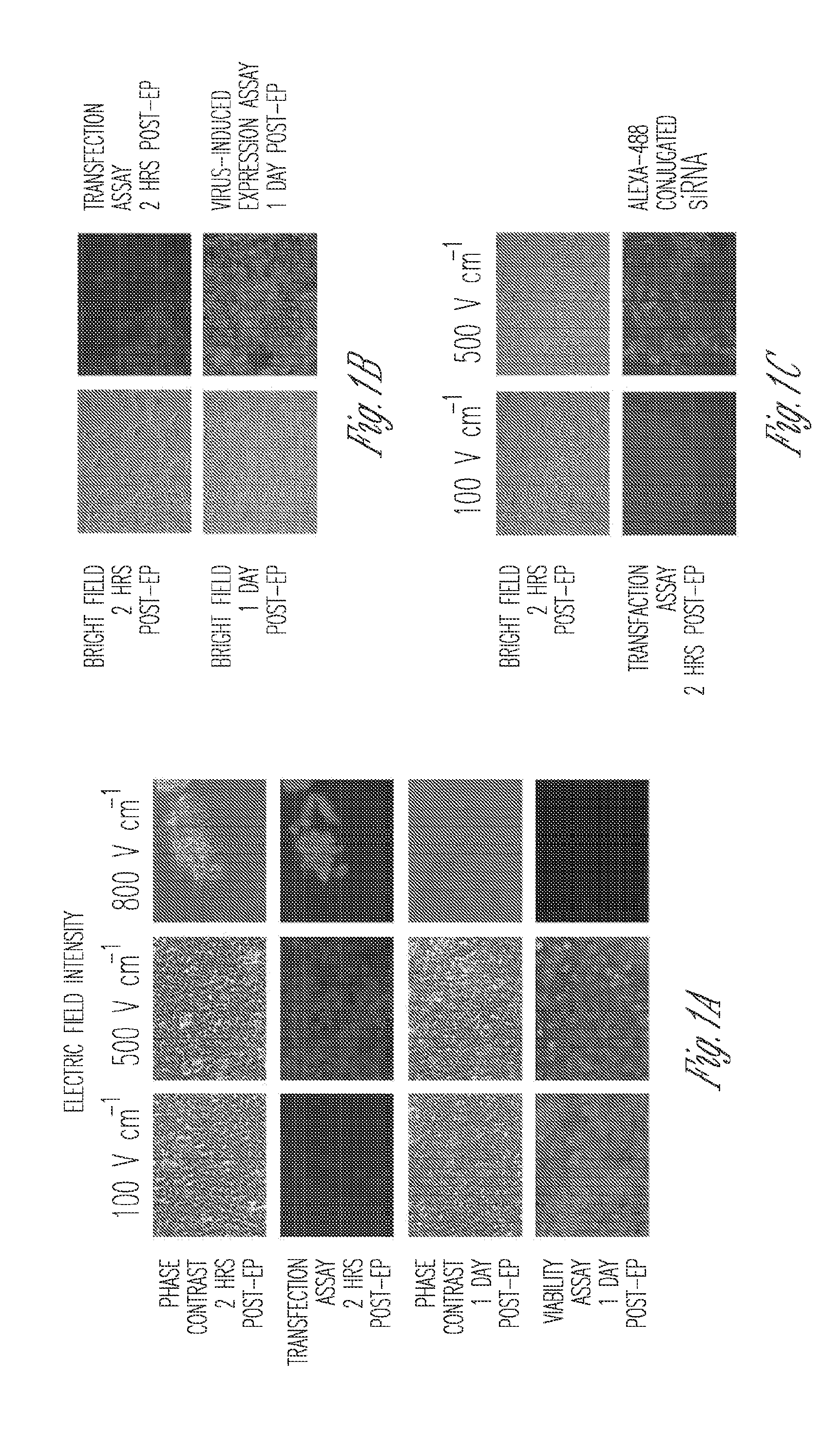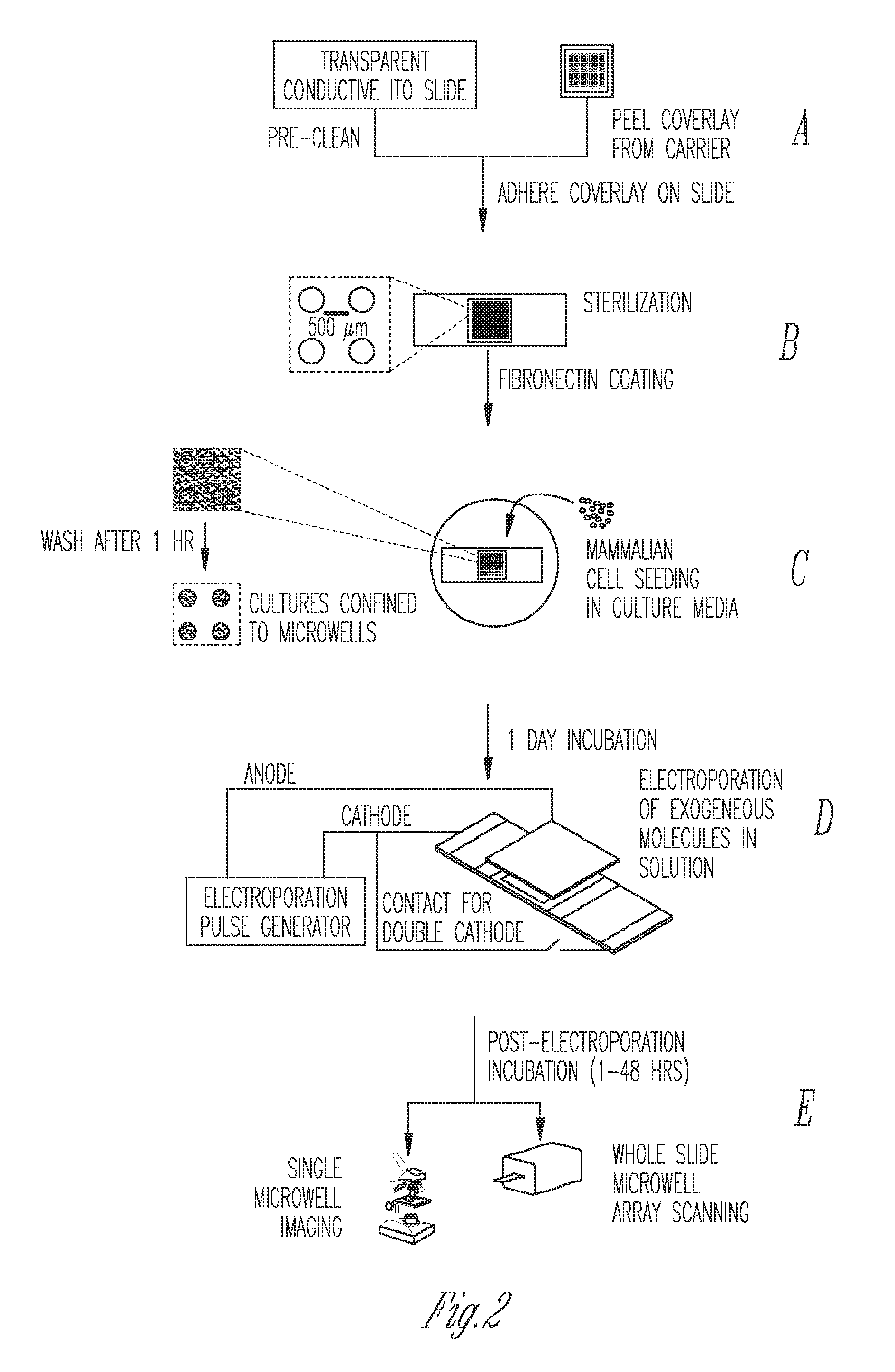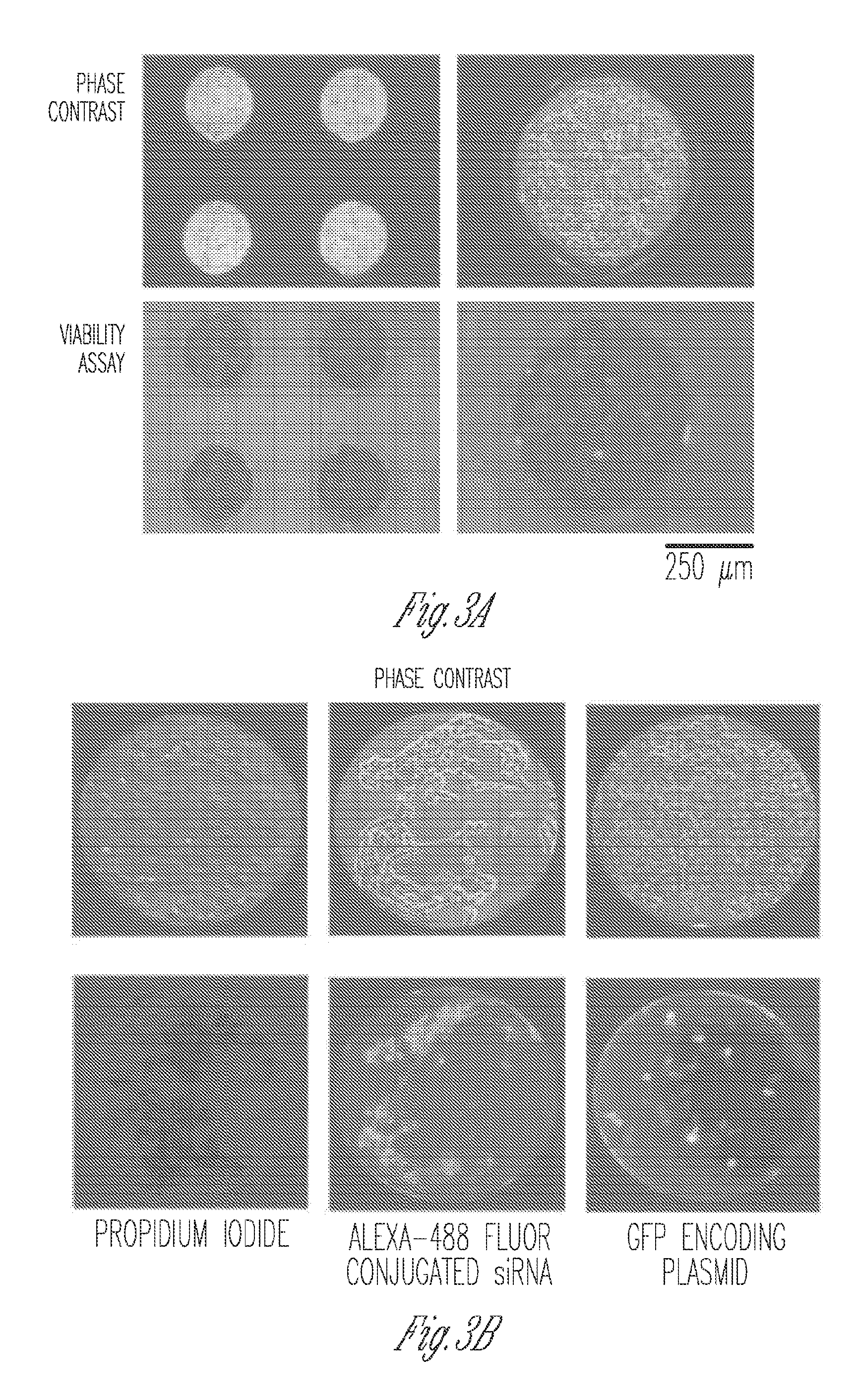Miniaturized electroporation-ready microwell aray for high-throughput genomic screening
a microwell and genome technology, applied in the field of miniaturized electroporation-ready microwell aray for high-throughput genomic screening, can solve the problems of limited application of capital expenses and the cost of reagents necessary to perform such large screens, hampered this screening technology, and difficult functional annotation of mammalian genomes, etc., to achieve high-efficiency parallel introduction of exogenous molecules
- Summary
- Abstract
- Description
- Claims
- Application Information
AI Technical Summary
Benefits of technology
Problems solved by technology
Method used
Image
Examples
example 1
Bottom Electrode Microwell Array
[0042]Example 1 begins with a substrate including a conductive material bonded on top of a base material. In an example, the base material is non-opaque (e.g., transparent or translucent). The base material can be either flexible or rigid and either conductive or non-conductive. For example, the base material can include a glass including borosilicate, quartz, soda-lime, and porous or non-porous glass. In other examples, the based material can include a plastic (e.g., a polymer) including Poly-methyl-methacrylate (PMMA), Polystyrene, Polycarbonate, and Polypropylene. In another example, the base material is opaque and can be a silicon, metal, ceramic and the like. In examples where the base material is conductive, the base material can include, for example, a metal, polysilicon, doped silicon, metal alloys, and composite materials containing conductive particles.
[0043]The conductive material can be bonded to the base material and can provide a bottom ...
example 2
Side Electrode Microwell Array
[0050]Example 2 begins with a substrate including a base material. In an example, the base material is non-opaque (e.g., transparent or translucent). The base material can be either flexible or rigid and is non-conductive. For example, the base material can include a glass including borosilicate, quartz, soda-lime, and porous or non-porous glass. In other examples, the based material can include a plastic (e.g., a polymer) including Poly-methyl-methacrylate (PMMA), Polystyrene, Polycarbonate, and Polypropylene. In another example, the base material is opaque and can be a silicon, ceramic and the like.
[0051]In an example, an electrode layer is formed on the substrate. In some examples, the electrode layer provides substantially uniform electric charge across the substrate. Accordingly, the electrode layer is composed of a conductive material and is used to distribute the electric charge across the substrate.
[0052]In an example, the electrode layer is com...
example
Highly Parallel Introduction of Nucleic Acids into Mammalian Cells Grown in Microwell Arrays
Materials and Methods
Optimization of Electroporation Parameters for HEK 293T Cells
[0099]Optimization was conducted on diced Indium-Tin Oxide (ITO) coated glass (unpolished, surface resistivity 4-8 Ωsq−1, Delta Technologies, MN) pieces as shown in FIG. 8A, on a custom-built electroporation setup (FIG. 8B). Briefly, pieces 1 cm×2.5 cm were diced from single microscope slides, rinsed in de-ionized water and dried under a nitrogen stream. Thereafter, 100 μl of 10 μg m−1 fibronectin from human plasma (Sigma) was pipetted on the top half of the piece and allowed to coat for 2 hrs. After aspiration and washing with PBS, 2−3×104 HEK293T cells in 100 μl of media (DMEM, 10% FBS and antibiotics) were added to the same spot. The cells were allowed to adhere to the spot for 1 hr in the incubator at 37° C. and 5% CO2, prior to washing with PBS and flooding with media. After 24 hrs of incubation, media was ...
PUM
| Property | Measurement | Unit |
|---|---|---|
| dispense volume | aaaaa | aaaaa |
| thickness | aaaaa | aaaaa |
| diameter | aaaaa | aaaaa |
Abstract
Description
Claims
Application Information
 Login to View More
Login to View More - R&D
- Intellectual Property
- Life Sciences
- Materials
- Tech Scout
- Unparalleled Data Quality
- Higher Quality Content
- 60% Fewer Hallucinations
Browse by: Latest US Patents, China's latest patents, Technical Efficacy Thesaurus, Application Domain, Technology Topic, Popular Technical Reports.
© 2025 PatSnap. All rights reserved.Legal|Privacy policy|Modern Slavery Act Transparency Statement|Sitemap|About US| Contact US: help@patsnap.com



